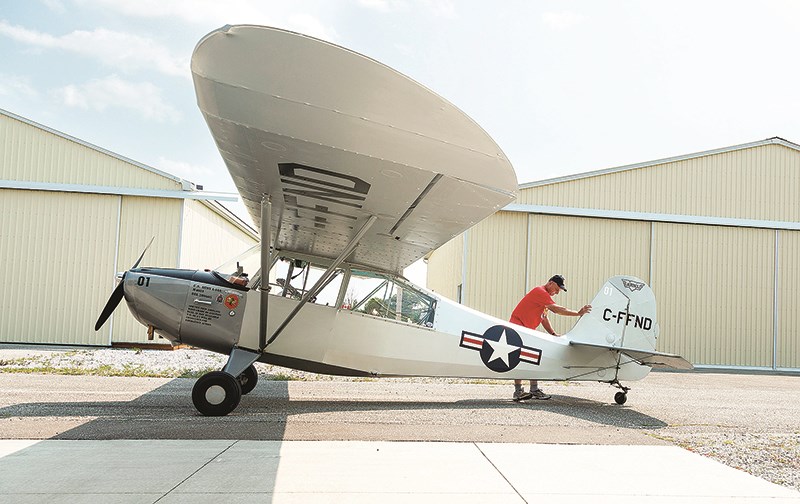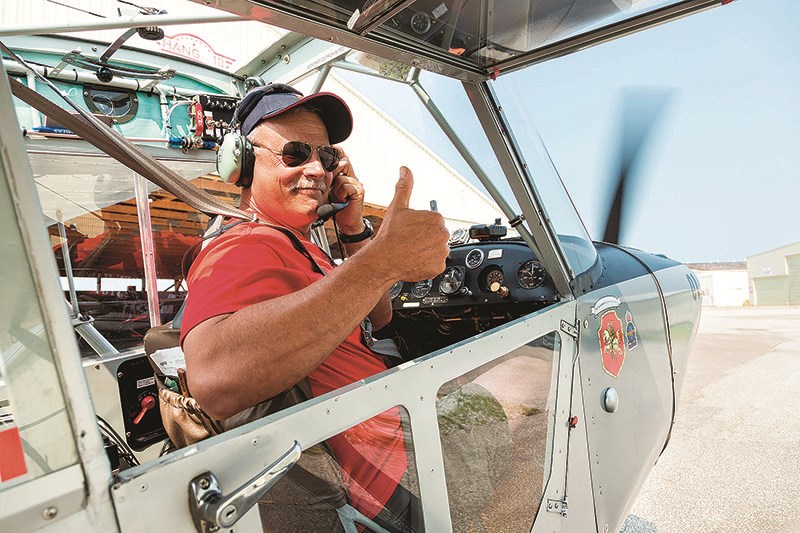Troy Shantz
Along the side of the vintage L-16 airplane that Mark Seibutis built is a small graphic that reads: Ad honerem Patris mei visio.
“In honour of my father’s dream,” explains the 57-year-old Sarnia firefighter.
“My dad had always wanted to fly. He was a foundry worker and there was never a tonne of money.”
But that didn’t stop Seibutis’ late father from igniting in his son a lifelong love of flight.
“On Sundays we’d go out for ice cream and come out here and watch the airplanes fly,” he said at the Huron Flight Centre in Sarnia.
Seibutis flies an L-16 military aircraft he converted from a 7AC Aeronca civilian airplane. The project took three years and “an understanding wife,” Seibutis said with a laugh.
To do the conversion, Seibutis obtained the plane design plans from the U.S. Air Force. Between his own welding and fabrication skills and the resources of machine shops in town, Seibutis was able to make his very own L-16.
The plane has a 35-foot wingspan but weighs less than 1,000 pounds. The body is Dacron, a type of fabric that’s wrapped around the frame and heat-shrunk to fit and then coated with liquid butyrate — 12 coats to be exact, Seibutis said.
Some modern touches found their way into the cockpit, including an electronic ignition and GPS system.
The L-16 is a small, agile aircraft that was used extensively by the U.S. Air Force during the Korean War, often as observer planes to spot enemy positions and help coordinate artillery strikes, Seibutis said.
“The enemy hated them. When they saw this they generally knew artillery wasn’t far behind them.”
Vintage aircraft are special things, he added.
“The thing I like about it is this was all built by hand. People were craftsmen then. It was amazing.”
Seibutis attends several air shows a year in his L-16, and is one of the formation flyover group of pilots, known as the 403 Honour Wing, that appear at Remembrance Day services and other special occasions.
Seibutis was also instrumental in the restoration of the F-86 Sabre Golden Hawk on display in Germain Park.
And he’s not stopping there. He is already well into his next build — a Second World War inspired RV-8 two-seater.
“Fully acrobatic and fast,” he said with a grin.

